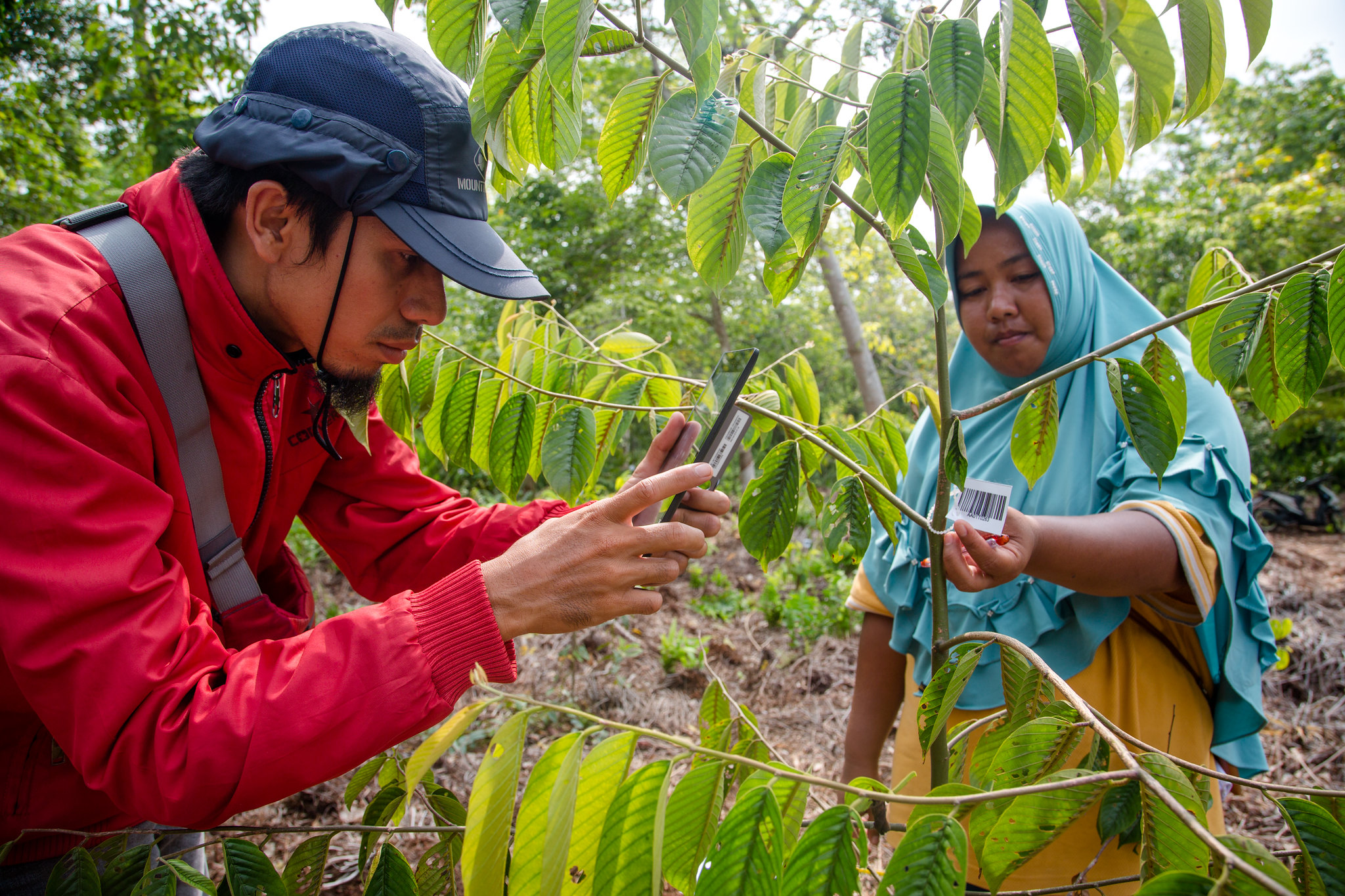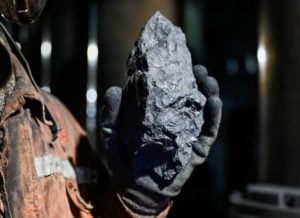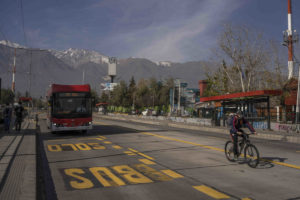The voluntary carbon market (VCM) is best understood as the global trade in rights to claim responsibility for specific reductions of greenhouse gas (GHGs) emissions, or outright removals of GHGs from the atmosphere. These rights are traded by companies as tokens known as carbon credits, which can be sold multiple times. Carbon credits are often called “offsets”, but this term is confusing because offsetting means organisations or individuals claiming that credits directly counterbalance their own continued emissions.
The VCM may have evolved over more than two decades, but it is in the past three years that its monetary value has grown most rapidly, hitting US$2 billion in 2021. Analysts have estimated that this could increase to the tens of billions by 2030.
These sums are tiny compared to overall needs for the global transition to net-zero emissions; for comparison, governments worldwide received US$56 billion from mandatory emissions permits in 2021. But they could still benefit the world’s climate and sustainable development goals. Under the right conditions, carbon credits raise investment for essential elements of any viable global climate strategy.
Voluntary participation by buyers differentiates the VCM from so-called “compliance” markets created by government policy. Domestic compliance markets include emissions trading systems (ETS), where participating companies must buy official emissions permits to cover any surplus emissions above a regulated threshold.
Some compliance markets are international, like CORSIA, an international scheme requiring airlines to compensate for emissions above a threshold.
To complicate matters, compliance markets can overlap with the VCM. For instance, CORSIA rules allow airlines to use credits from certain independent standards. In some cases, governments allow companies in their domestic compliance markets to use voluntary credits to meet their obligations.
Carbon credits are generated by activities like protecting forests and wetlands, providing clean cookstoves to households that don’t have access to electricity, and switching to low-carbon forms of agriculture. Scale varies: credits to date are mostly from local-level projects such as building a wind farm or protecting rainforest on a plot of land, but programmes that take place across a whole region or country are gaining momentum for energy and forests. Typically, non-governmental organisations such as Verra, Gold Standard, and the American Carbon Registry assess activities, certify those that meet their standards, issue credits on their behalf and track those on a registry.
Challenges for the voluntary carbon market
The VCM has an uncertain future. Carbon credits and companies using them have had some bad press for seeming not to meet the standards they claim, and the past year has seen a gradual decline in credit prices. However, governance bodies are releasing new standards and guidance throughout 2023 to serve as new “rules of the game” and restore trust among stakeholders and the public. The challenges associated with ensuring a positive impact on climate and development – commonly referred to as “integrity” – can be grouped into three buckets: the quality of credit supply, credible demand from buyers, and how the market functions.
High credit quality has several dimensions. Changes in emissions must be calculated accurately and account for “leakage”, whereby emissions rise elsewhere. An activity should be “additional”, meaning that it wouldn’t have taken place without credits. Activities are unlikely to be additional if they are financially viable outside of the VCM or mandated by government policy. Reductions or removals of GHGs should be permanent (in effect, lasting at least several decades). Finally, there should be no negative impacts on other aspects of sustainable development, such as protecting biodiversity or supporting women’s empowerment – ideally, credits should have positive impacts on these goals. All of these attributes should be monitored and reported transparently, and verified by legitimate third parties, usually provided by specialist firms.
There is a common perception that GHG removals are higher quality than emission reductions – especially since a high-profile set of principles, published by Oxford academics, encouraged a shift towards removals by 2050. This requires nuance.
Since measuring reductions requires assessing a hypothetical situation where the activity didn’t take place, removals can be easier to verify. Net zero, whether at global or organisational level, can only be achieved with removals. However, many emissions reductions are essential in the near-term and could prevent cascading emissions and temperature rises, such as protecting rainforests or mangroves. And in 2023, monitoring, reporting and verification for removals remains patchy. Whatever the type of activity, there is no substitute for robust standards.
Researchers have alleged that many projects certified by major independent standards, such as Verra and Gold Standard, exaggerate their achievements and may even harm local communities; there are records of people being removed from their homes by developers claiming to be protecting forests. The industry is trying to fix this. Most prominently, a civil society and private sector coalition known as the Integrity Council for the Voluntary Carbon Market has been defining “core carbon principles”, or benchmark rules, for credits and the certifying bodies themselves. Receiving a mixed reception for its first release, the framework does require improvement on key issues including clarifying credit beneficiaries and non-carbon impacts. Following its release of the full framework at the end of July, the group aims to make decisions on certain credits it deems consistent with its principles by COP28 at the end of this year.
Private carbon credit ratings agencies, such as Sylvera, Be Zero and Calyx Global, can provide an extra layer of scrutiny to certified credits. Whereas certification is a binary test, ratings reveal variations in quality and can highlight areas that need improvement. For example, while clean cookstove projects are likely to be additional and substantially improve people’s quality of life, carbon credits from these projects probably overstate emission reductions. Civil society groups have also made extra efforts to shore up credit quality, including the Carbon Credit Quality Initiative and Tropical Forest Credit Integrity Guide, developed by NGOs in collaboration with Indigenous people’s groups.
Demand, the second plank of integrity, hinges on how buyers use credits. Critics fear that the VCM might discourage buyers from making deeper cuts to their own emissions elsewhere. In fact, industry studies over the years have suggested that companies buying credits tend to surpass peers on other aspects of climate performance. However, the overall effects are complex and also involve uncertain changes in behaviour. For instance, when consumers hear that products, from plane tickets to cans of beer, are “carbon neutral”, it might make them feel okay about buying more overall.
In other words, the marketing claims made by buyers of carbon credits are crucial – and the current landscape is uneven and poorly understood. Considering the variety and range in quality of credits, what matters most is that buyers’ claims fairly reflect their contribution to global climate mitigation and development. To ensure this, complementary coalitions are working on the demand-side problem. In June, the Voluntary Carbon Markets Integrity Initiative published a ‘code of practice’ for marketing claims. The Science Based Targets initiative, a leading standard for net-zero commitments, has been consulting on broader guidance for how companies can responsibly invest in climate mitigation beyond the scope of their own targets. Companies are also increasingly at risk of legal action for misrepresenting their climate impact, especially through claims to carbon neutrality – such as that of Delta Air Lines, the largest buyer in the VCM over recent years.
Finally, a VCM with integrity requires end-to-end transparency to understand how the benefits are distributed to people and the planet; the journey from issuance to use is just as important as the credit itself. Historically, many companies have purchased carbon credits from specialised brokers. However, some marketplaces now provide reference contracts based on bundles of similar credits, such as protecting similar ecosystems in different countries. A trade-off emerges: treating credits as standardised financial commodities makes the market easier to access, but could disincentivise developers to improve quality because special benefits, like supporting biodiversity, won’t be recognised.
Many additional “intermediary” actors are involved in providing the infrastructure required for credits to reach buyers. In general, this intermediation in the VCM is fragmented and opaque. Hidden fees within credit transactions make it hard to tell the actual amount that is invested in the climate and local communities. Financial regulators are paying closer attention to the VCM, and public oversight of trading practices could shine a light on where intermediaries are claiming unjustly high shares of revenues.
Policy and the Paris Agreement
The VCM doesn’t exist in a vacuum. The United Nations framework, chiefly the Paris Agreement, provides essential context by setting global climate goals. However, the VCM reflects a policy failure, as voluntary action wouldn’t be needed if governments were doing enough towards those goals. It is also a front in a wider struggle for sustainable development and climate justice, particularly for global south countries that haven’t received what they were promised in international finance by global north governments.
The UN created its own mechanisms for carbon trading under Article 6 of the Paris Agreement. Key differences between the UN’s mechanisms and the VCM are participation by governments and the certification of carbon credits by the UN, rather than by independent standard bodies. Governments have obligations under the Paris Agreement to submit their own decarbonisation commitments and plans and to keep and report national inventories of emissions.
Article 6.2 allows national governments to forge agreements directly, whereby they can invest in decarbonisation in another country and claim credit for emissions reductions.
Article 6.4, by contrast, creates a centralised marketplace with methodologies for issuing carbon credits established by a ‘Supervisory Body’.
This muddies the waters for the VCM, because if two countries claimed responsibility for the same emissions reductions, it would undermine climate action. The rulebook for Article 6 requires countries that authorise the transfer of emissions reductions to buyers abroad to make a “corresponding adjustment” in their own accounting. In contrast, credit sales through the VCM don’t technically need such adjustments, but some participants are preparing to seek authorisation by host governments anyway, and many observers believe buyers’ claims should reflect whether or not they are using credits with adjustments.
Governments have options. “Access strategies” to attract international finance through carbon markets, such as the regional approach taken by the African Carbon Markets Initiative, could include tracking credits, creating supportive policy environments for projects and marketplaces, or requiring a form of legal approval that stops short of authorisation. Full authorisation means foregoing the right to claim emissions reductions in their territory, but gaining greater control of the market. On the demand side, governments can regulate company claims, require certain kinds of information in disclosures, or allow the use of credits in domestic emissions trading systems (see the ‘Carbon markets: voluntary or mandatory?’ box above).
So far, the result is a patchwork of national policies for international carbon markets. Indonesia, Honduras and Papua New Guinea froze exports of forestry credits in 2022. China has relaunched its own certification scheme and registry to sell credits both domestically and internationally. And in May 2023, Zimbabwe caused a stir by claiming 50% of revenue from future credit sales, setting benchmarks for shares for foreign and domestic investors, and nullifying all existing agreements. Overall, action by governments may lead the global trade in credits to fragment from a global marketplace into a series of localised voluntary carbon markets.
Importantly, however, governments are far from the only relevant beneficiaries for sustainable development. Indigenous peoples are key for their stewardship of natural ecosystems, and often need financial and policy support to defend their territorial rights against extractive corporations. Carbon markets could also give women from emerging and developing economies the opportunity to access climate finance by developing and owning their own projects – which is crucial especially given female farmers’ important role in agriculture across the global south. Yet both groups are still sidelined in market institutions’ decision-making and governance processes.
Looking ahead
The VCM could face very different futures depending on decisions that will be made in the coming months. Factors that will work in favour of scaling the VCM include the rapid growth of corporate climate commitments, ambitious coalitions and innovative technologies driving greater transparency, and the increasing urgency of arresting runaway global temperatures. However, unless 2023 produces workable rules with credible examples of good practice, companies might change tack and give up on the market.
Many governments are likely to bring the VCM within the scope of public regulation sooner rather than later, so all climate policymakers and campaigners should familiarise themselves with voluntary markets and credits. Though imperfect, the VCM contains the seed of our most likely future: one where everyone in society has to pay for carbon emissions, because we can no longer afford them to be free.










